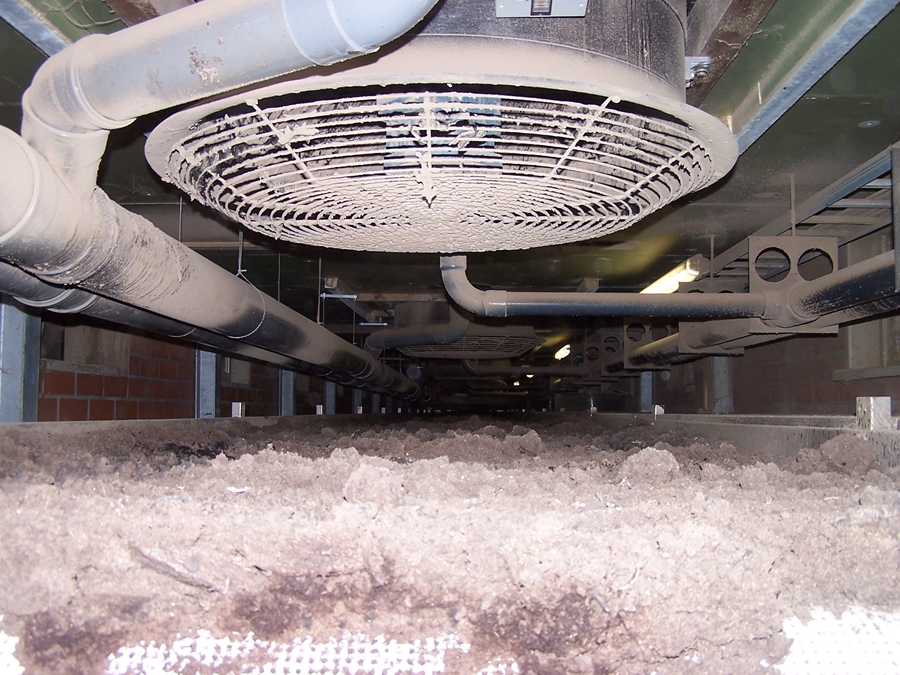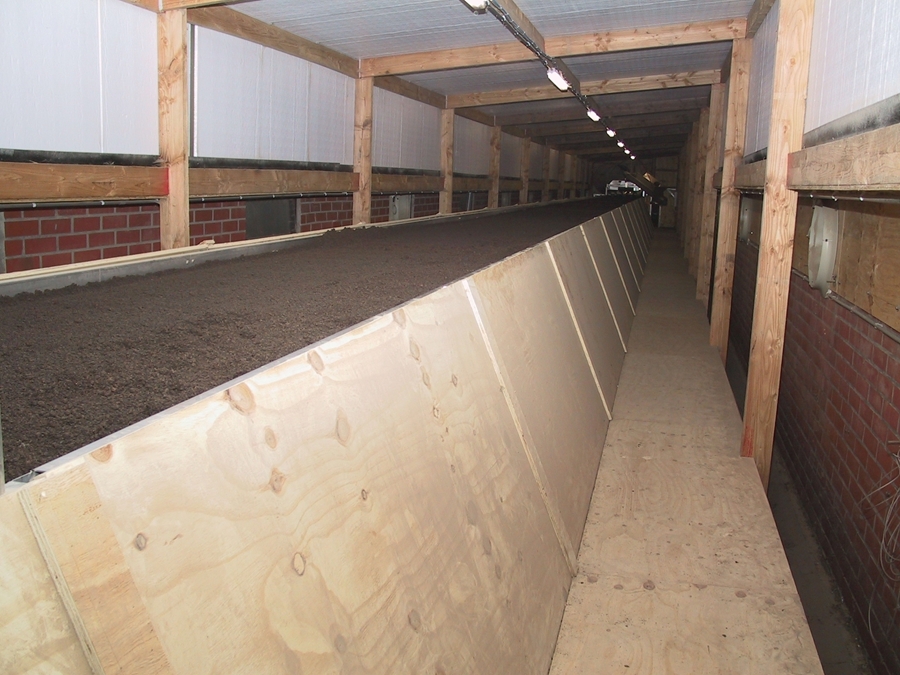- Home
-
Manure processing
-
Manure processing in Flanders
- State of affairs
- Techniques and end products
- Ivan Tolpe Prijs - Manure Processing Innovation Award
- Transition in manure processing
- Publications
- ManuResource conference
-
Manure processing in Flanders
- ManuResource
- Projects
- News
- Organisation
- Contact
- State of affairs
- Techniques and end products
- Ivan Tolpe Prijs - Manure Processing Innovation Award
Thermal drying

The objectives of thermal drying of manure are similar to those of biothermal drying, but the difference is that the heat is not produced by micro-organisms but from an external heat source. The goal of thermal drying is to reduce the volume and volume of the manure. Germ reduction also takes place at a certain level during drying.
Thermal drying can be applied to solid manure or solid fraction, but can also be applied to liquid manure (such as pig slurry) or chicken manure. For example, chicken manure can be dried with the aid of stable heat or thermally heated air. Liquid manure is first thickened or mixed with the dried final product. Solid manures and thick fractions after separation can be dried directly or mixed with the final product if the dry matter content is insufficient.
Belt dryer

A currently used drying technique in Flanders is the belt dryer. Manure is applied to a perforated belt or floor on which hot air is blown with a fan. In this way the product is dried on the belt.
Heating of the air can be done with renewable energy by means of a CHP engine powered biogas or wood combustion. The final product has a dry matter content of 60 to 95%.
- State of affairs
- Techniques and end products
- Ivan Tolpe Prijs - Manure Processing Innovation Award